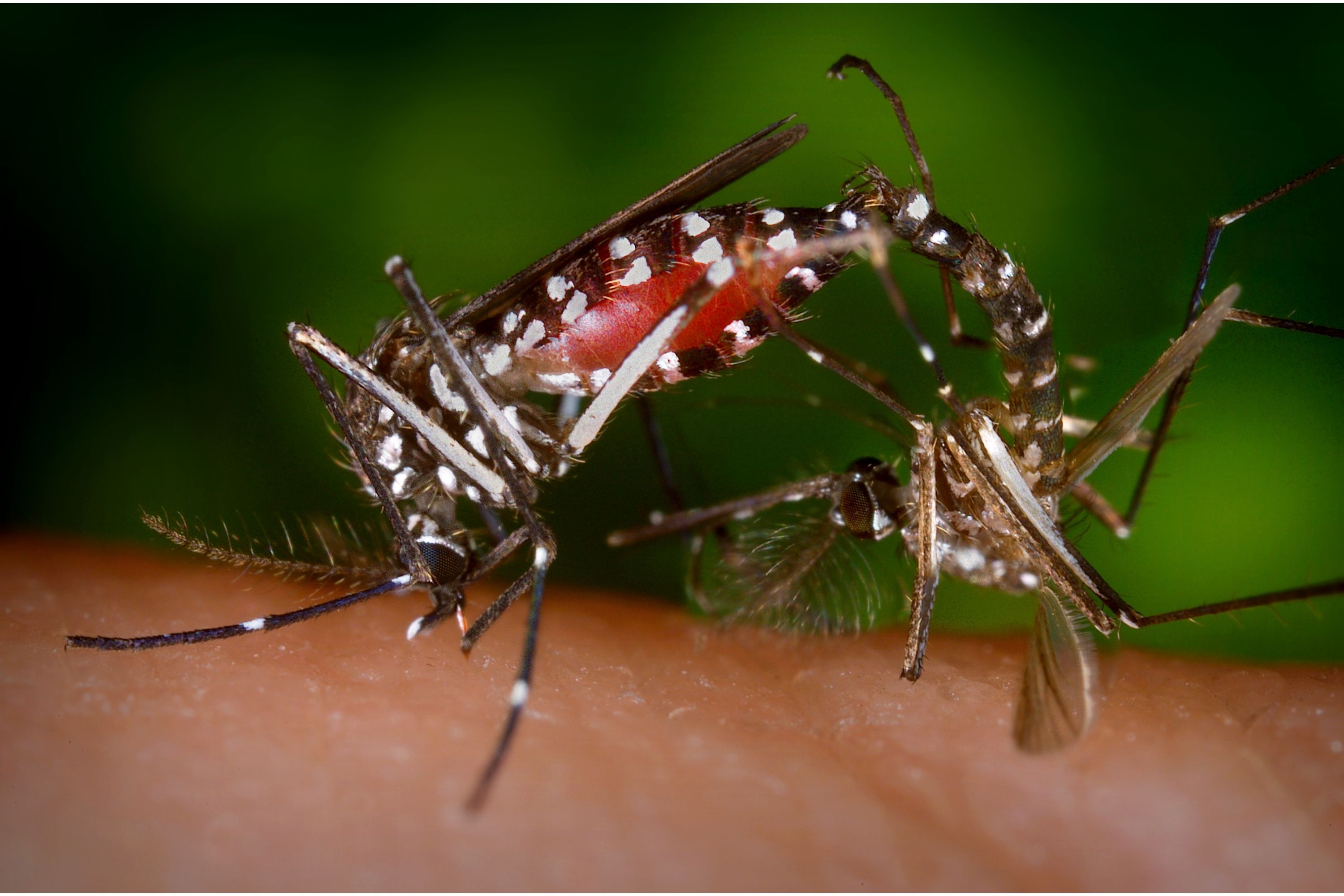Asian bush mosquito
(Aedes japonicus)

Description
Aedes japonicus, commonly known as the Asian bush mosquito or the Asian rock pool mosquito, was first described by Theobald in 1901 from Tokyo, Japan and has four known subspecies Ae. j. japonicus, Ae. j. shintienensis, Ae. j. yaeyamensis, and Ae. j. amamiensus.They are competent arbovirus vectors known to transmit the West Nile virus as well as Japanese and St. Louis encephalitis.They are listed as an invasive species by the Global Invasive Species Database Adults have a distinctive bronze-colored, lyre-shaped pattern on the scutum, and larvae have a linear arrangement of branched frontal setae and a strongly spiculated anal saddle. Adults live in forested areas and are day biters, but are apparently reluctant to bite humans. In the laboratory, they feed on chicks and mice but not on reptiles or amphibians. Larvae occur in a wide variety of natural and artificial water retainers such as tree holes and rock holes, usually preferring shaded places and water rich in organic matter. They are found from early spring to early autumn in their native habitat of Central Japan.They overwinter as eggs in cooler regions and larvae in warmer regions. Larval habitats are often established in rock pools near streams as well as container habitats that provide adequate moisture such as buckets, tree holes, and the insides of tires.Their large variety of colonizable habitats has been shown to negatively impact native species through displacement, competition, and disease spreading capabilities.Adult mosquitoes prefer temperate climates with mortality rates rising around 28°C (82.5°F) and can survive cold conditions by entering diapause in the egg stage A. japonicus are multivoltine and oviposit 2 – 3 times per gonotrophic cycle, producing a mean of 114 ± 51 eggs per female.The eggs are resistant to desiccation and if temperatures are low then the eggs will enter the prediapause stage where its responsive to environmental based cues that cause it to enter diapause at the pharate first instar.In Northern Europe diapause is indispensable to survive cold winter temperatures; 50% of eggs enter in diapause by the end of summer, leading to an average calculated maternal critical photoperiod of 13 h. Larvae of A. japonicus are active as soon as early spring in snowy spring waters, notably the only mosquito to do so and is likely key to their invasive success
Taxonomic tree:







